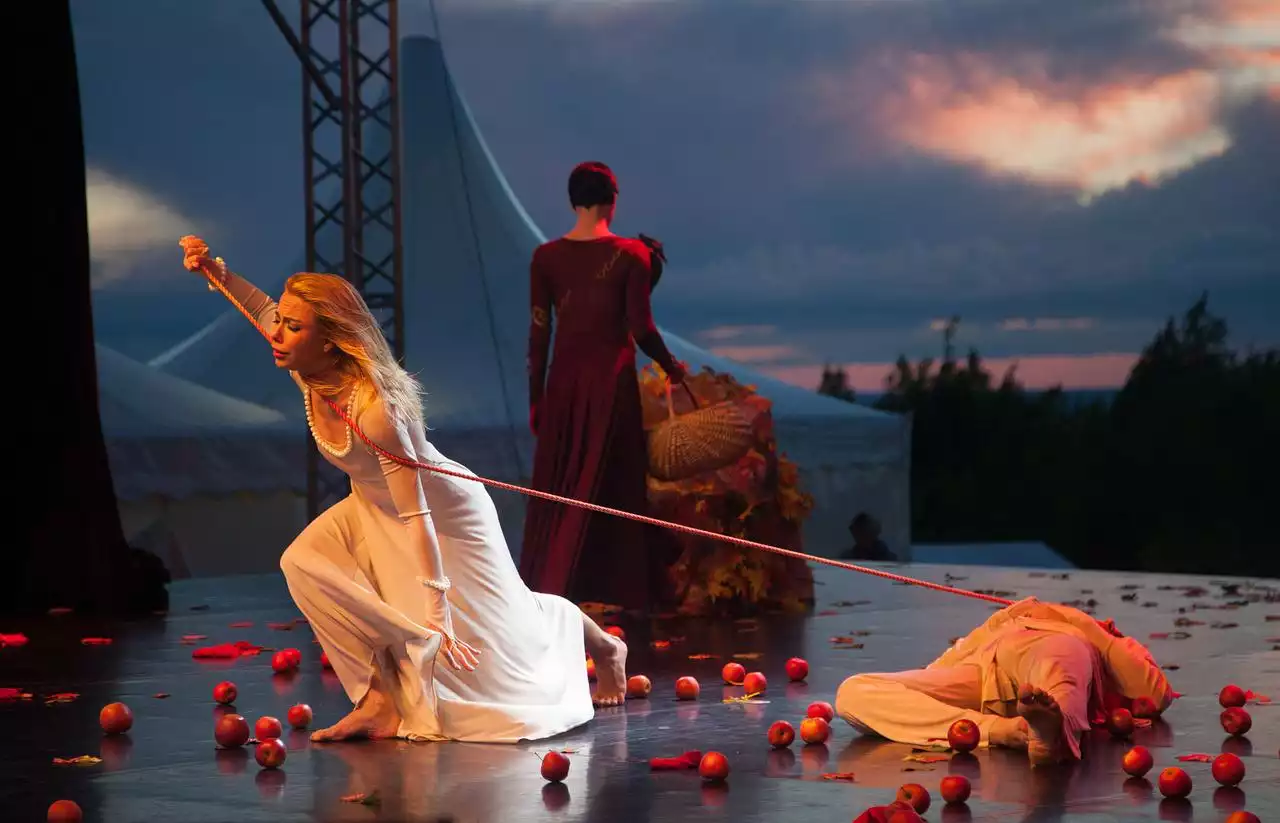Romeo and Juliet was first performed at the Curran Theatre in San Francisco, California on June 30th, 1895. It was directed by Charles Clark and starred Louise Lewis as Juliet, Edwin Milton as Romeo, and Nicolassa Penna as The Nurse. It was part of the Muccasah Temple’s “Sacred and Profane Festival” and was advertised as being “unlike the ordinary production of Shakespeare’s immortal story.” The first production in the UK was at London’s New Theatre on July 25th, 1895. It was again directed by Charles Clark and starred Louise Lewis as Juliet, Charles Herbert as Romeo, and Louise D’Arcy as The Nurse. Interestingly, the play was performed in three acts, which was unusual for Shakespeare’s day.
The First Folio of Romeo and Juliet
The first printed edition of Romeo and Juliet was published in 1623. It was based on the now lost “first draft” of the play, which was written sometime between 1595 and 1597. The First Folio edition of Romeo and Juliet is famous for containing 16 pages of famous “cut” passages. These are sections of dialogue and stage directions that were removed from later printed copies of the play. Charles Muir, a well-known Shakespeare scholar, 1936 wrote the first modern edition of Romeo and Juliet. It was a “modernized” version of the play and was based on the First Folio version. In 1986, the New Variorum edition was released, which is a modern version of the First Folio edition.
1750-1770: The Operatic Years
In the 18th and 19th centuries, Romeo and Juliet became an operatic favorite. In 1750, it was performed in a three-act French version by Charles-Hubert Gousemard and Jacques-Philippe Dumesnil. This production was extremely successful and remained in the repertory for almost a century. The first Italian version was the 1765 production of Francesco Morlacchi. The most famous Italian version is the one by Gaetano Donizetti, which premiered in 1838 and became a standard repertory piece. The first English version was in 1763, which was a two-act piece by Francis Gentleman.
1816: The Restoration of Shakespeare's Text
The Romantic Era was a time of change in the way that Romeo and Juliet was performed. In 1816, William Henry Murray published his “Restoration of Shakespeare’s Text” which was based on the 1623 First Folio version. This was the first modern, scholarly edition of the play. In 1838, George Nathan published a version in which he tried to restore the play “to the original simplicity of Shakespeare’s unadorned, unaffected style.” These two editions were followed by the Riverside edition in 1896, and the Oxford edition in 1986. During the 19th century, the play became more popular and was performed more often.
1830-1880: The Victorian Era
The Victorian era saw the first “Romeo and Juliet” with children in the lead roles. George Henry Lewes wrote the first children’s version of the play in 1844. The nineteenth century also saw the first attempt to “stage” the balcony scene. The first balcony was made of real plants and flowers, and was first used in a production at the Princess Theatre in London in 1872. In 1846, the first American “Romeo and Juliet” was performed in Boston. It was produced by a touring British company and was considered a failure. The play was performed in New York in 1854 and was a smash hit. In the 1850s and 1860s, there was a “Romeo and Juliet” craze. The play was performed everywhere and in every possible way. It was performed on ships, in gardens, in halls, in opera houses, and in theatres.
1920-1940: English Renaissance Performances
During the 1920s and ’30s, Shakespeare's productions went back to the style of his own time. Productions were minimalist and much of the play was cut. It was also common to cast actors in the wrong roles, giving Mercutio a female actor, for example. In the 1930s and 1940s, the focus shifted from Shakespeare’s plays to those of the Restoration Period. It was a period of “restoration” in which productions were considered to be more “realistic” and “authentic.” In the 1940s and ’50s, performance styles shifted again. Productions of Shakespeare’s plays became more formal and less “realistic.” They were often considered to be a “recreation” of Shakespeare’s style, rather than an “authentic” copy.
1960-1990: Neoclassical Productions
During the 1960s and ’70s, productions were often minimalist, focusing on the language and themes of the play. The set consisted of a simple platform and wooden chairs. This was called “neoclassical” because it was a return to a Greek style of performance. There was also a strong focus on authenticity, which often meant that the play was performed in the language it was written in. Another popular style of the time was “alternative” productions. These often featured an all-female cast and “modern” settings. They tried to engage with modern audiences and tackle modern themes, such as racism and sexism.
Conclusion
Romeo and Juliet has been performed in many different ways throughout the centuries. It has been performed on ships, in gardens, in halls, and in opera houses. It has been performed by aristocrats and by children. It has been performed in many different languages and many different styles, from minimalist to highly detailed. It has been adapted into a wide range of different formats, such as puppet shows, hip-hop ballets, and films.


 The Benefits of Regular Facials
The Benefits of Regular Facials
 The Numerous Benefits of Qigong for the Body
The Numerous Benefits of Qigong for the Body
 An Insight into the Diesel Car
An Insight into the Diesel Car What’s the Difference between Opera and Theatre?
What’s the Difference between Opera and Theatre? The Most Popular Theatre Plays in History
The Most Popular Theatre Plays in History The Most Popular Plays in Modern Theatre
The Most Popular Plays in Modern Theatre The Best Musicals in Theatre
The Best Musicals in Theatre